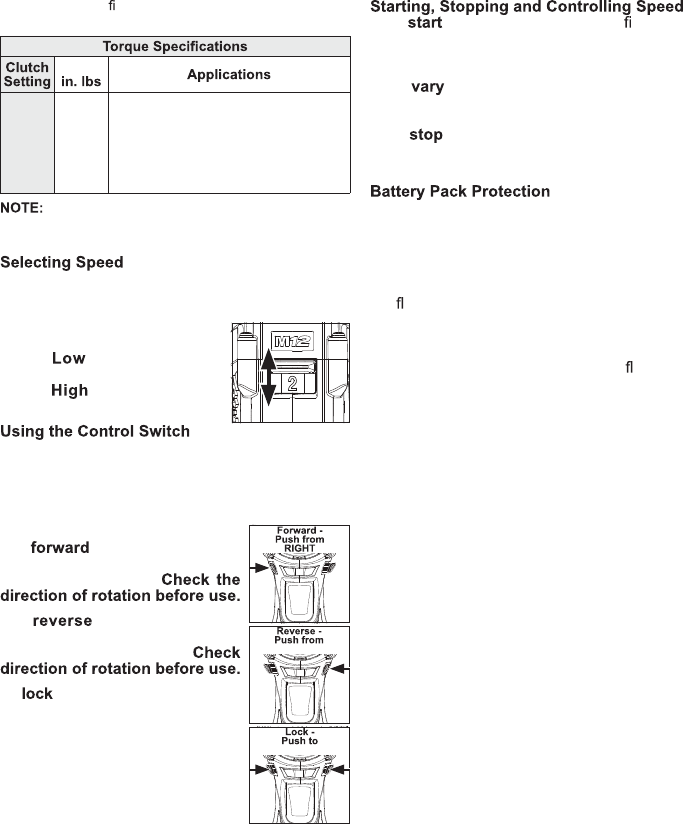
7
Because the settings shown in the table are only
a guide, use a piece of scrap material to test the different
clutch settings before driving screws into the workpiece.
The speed selector is on top of the motor housing.
Allow the tool to come to a complete stop before
changing speeds. See “Applications” for recom-
mended speeds under various
conditions.
1. For speed, push the
speed selector to display “1”.
2. For speed, push the
speed selector to display “2”.
The control switch may be set to three positions:
forward, reverse and lock. Due to a lockout mecha-
nism, the control switch can only be adjusted when
the ON/OFF switch is not pressed. Always allow
the motor to come to a complete stop before using
the control switch.
For
(clockwise) rotation,
push in the control switch from the
right side of the tool.
For (counterclockwise)
rotation, push in the control switch
from the left side of the tool.
To the trigger, push the control
switch to the center position. The
trigger will not work while the con-
trol switch is in the center locked
position. Always lock the trigger
or remove the battery pack before
performing maintenance, changing
accessories, storing the tool and
any time the tool is not in use.
1-5
6-10
11-15
16-18
5-15
16-22
23-28
29-40
Small screws in softwood.
Medium screws in softwood or small
screws in hardwood.
Large screws in softwoods. Medium
screws in hardwood or large screws in
hardwood with pilot hole.
The torque speci
cations shown here are approximate
values obtained with a fully charged battery pack.
1. To the tool, grasp the handle rmly and pull
the trigger.
NOTE: An LED is turned on when the trigger is
pulled.
2. To the speed, increase or decrease the
pressure on the trigger. The further the trigger
is pulled, the greater the speed.
3. To the tool, release the trigger. Make sure
the bit comes to a complete stop before laying
the tool down.
To protect the battery from damage and extend
its life, the tool’s intelligent circuit monitors current
draw, temperature, and voltage drops.
In extremely high torque, binding, stalling, and short
circuit situations that cause high current draw, the
tool will vibrate for about 5 seconds, the fuel gauge
will ash, and then the tool will turn OFF. To reset,
release the trigger.
Under extreme circumstances, the internal tem-
perature of the battery could become too high.
If this happens, the fuel gauge will ash and the
battery pack will shut off. Let the battery pack cool
and then continue work.
LEFT
CENTER














